The information in this article applies to:

QUESTION
I have generated wall framing in my plan and would like to make some changes to it. How is this accomplished?

ANSWER
You can select and edit most wall framing in any 2D or 3D view.
There are a number of steps in order to manually edit wall framing which includes the following steps:
If you automatically rebuild wall framing after making manual modifications, your changes will be lost. To protect manual changes made to a wall’s framing, check the "Retain Wall Framing" box located in each wall's Specification dialog.
To verify the wall type definition
- Select Build> Wall> Define Wall Types
 .
.
- Using the drop-down in the top left corner of the Wall Type Definitions dialog, select a wall type used in the plan and verify that the Main Layer, which should typically have a framing material applied, has the Framing box checked under the Material Layer section. If it does not, adjust the wall accordingly. Repeat this process for each wall type in use.
In legacy versions, a Material Layer section was not available. Instead, verify that the Main Layer has a framing material applied, such as Fir Stud 24" OC.
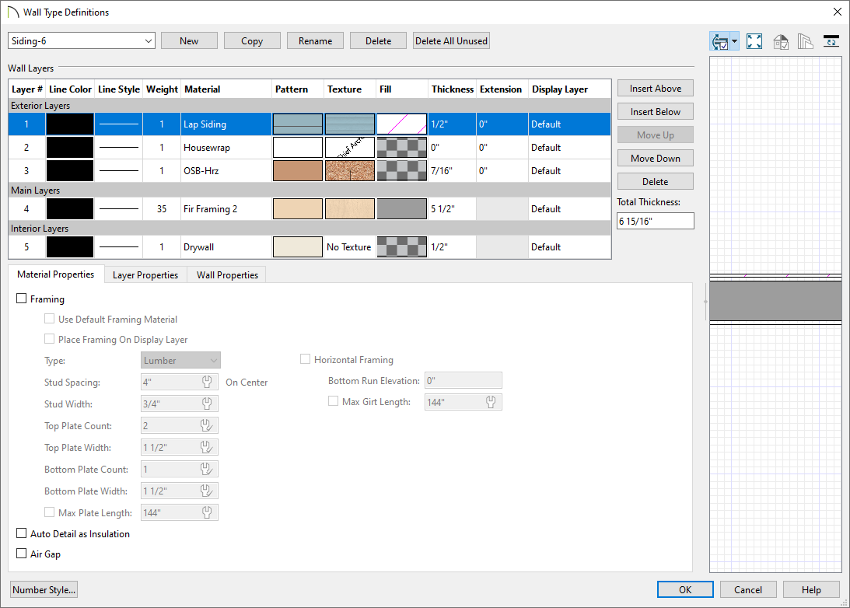
- Make any other desired framing changes, such as to the Type, Spacing, Width, and Plate fields, then click OK.
To generate wall framing automatically
- First, navigate to Edit> Default Settings
 , expand the Framing category, select General Framing, then click Edit.
, expand the Framing category, select General Framing, then click Edit.
In X15 and prior versions, select the Framing category, then click Edit instead.
- On the Wall panel of the Framing Defaults dialog that opens, adjust your wall framing properties, such as Wall Corners and Wall Intersections, Plates, Blocking, etc.
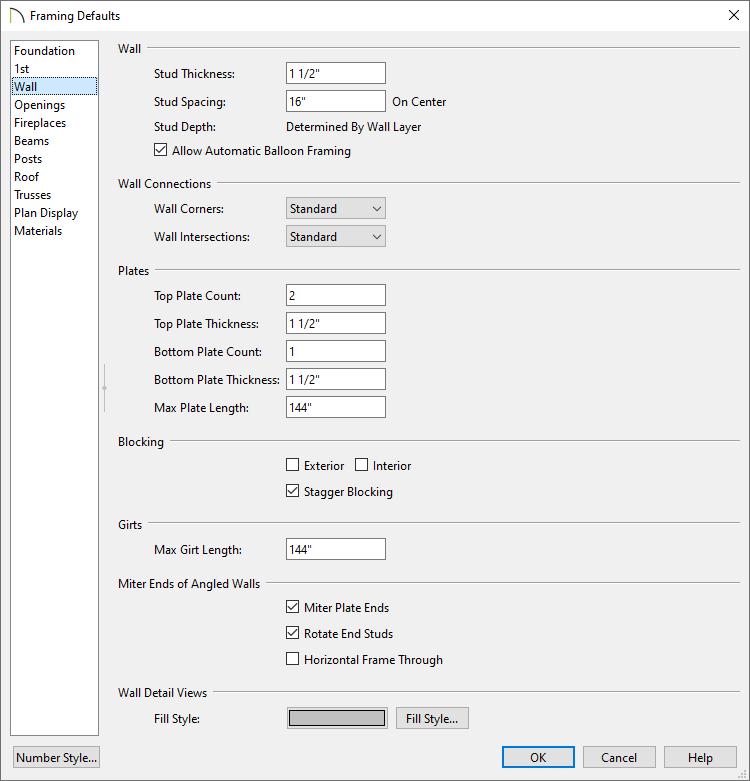
- Click OK and Done to close the dialogs and confirm the changes.
- Select Build> Framing> Build Framing
 .
.
- In the Build Framing dialog, check the Walls box under the Build Framing Once section, then click OK.
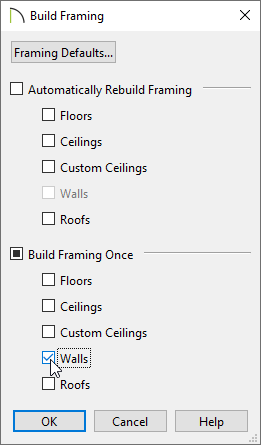
In X15 and prior versions, check the Build Wall Framing box located on the Wall panel, then click OK.

To edit wall framing in plan views
- In your desired plan view, select Tools> Layer Settings> Display Options
 or access the Active Layer Display Options
or access the Active Layer Display Options  side window
side window
- Locate the "Framing, Headers" and "Framing, Wall" layers, place a check in the Disp column or Display checkbox for both, then click OK.

- Using the Select Objects
 tool, click on a framing member to select it.
tool, click on a framing member to select it.
If the wall or opening is selected first when attempting to select a framing member, click the Select Next Object edit button or press the Tab key on your keyboard as many times as needed until the framing member is selected.
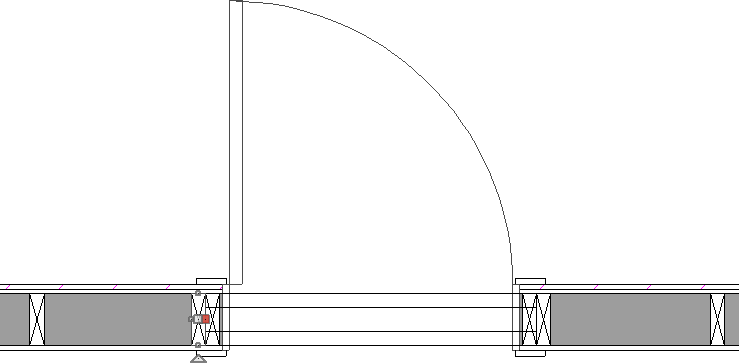
-
Once selected, the framing member can be edited using its edit handles, edit toolbar buttons, or by opening its Framing Specification dialog.
To edit framing member roles*
*Available in X14 and newer versions.
- To control the member role of a framing member, select it using the Select Objects
 tool, then click on Open Object
tool, then click on Open Object  .
.
- On the General panel of the Framing Specification dialog, change the Role to match your needs, then click OK.
Changing the role of a framing member can assist you when creating framing or custom schedules.
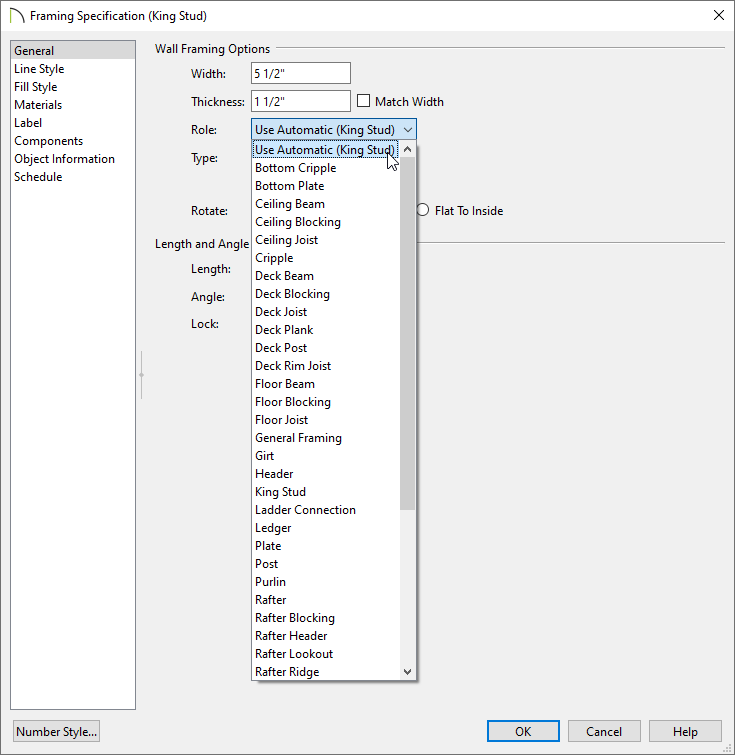
To edit the position of wall framing using Framing Reference Markers
- In a floor plan view, navigate to Build> Framing> Framing Reference Marker
 .
.
- Framing Reference Markers can be placed anywhere, but a typical location is the corner of two exterior walls, at the exterior of their framing layer.
- Framing Reference Markers can be placed on each level of your design to control where framing originates and choose which types of framing members reference the marker.
- Framing Reference Markers snap to framing members and other CAD-based objects first, and then to a wall Main Layer surface or corner if possible.
- Once placed, Framing Reference Markers can be modified just like other markers.
-
Click in the plan where you would like the Framing Reference Marker to be placed.
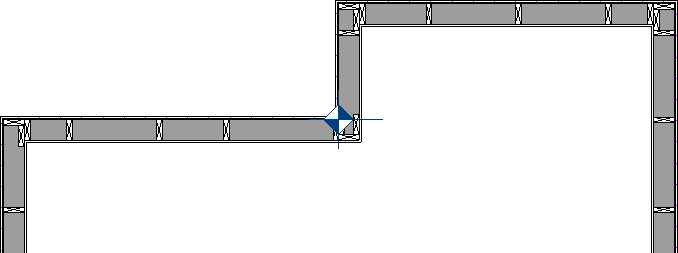
When framing is generated using a Framing Reference Marker, the first framing member of a given type snaps to this point and all other framing members are laid out from there.
-
Wall and roof framing snap to the Framing Reference Marker at their centers.
-
Use Stud Rollout controls in the Wall Specification dialog to manage the framing start point for walls.
- Using the Select Objects
 tool, select all the framing that needs to be moved to the Framing Reference Marker, then click on the Move to Framing Ref.
tool, select all the framing that needs to be moved to the Framing Reference Marker, then click on the Move to Framing Ref.  edit tool.
edit tool.

To edit wall framing in Wall Details
- In a plan view, select a wall that you would like to modify the framing for using the Select Objects
 tool.
tool.
- With the wall selected, click the Open Wall Detail
 edit button to open an elevation view displaying the wall framing for the individual wall.
edit button to open an elevation view displaying the wall framing for the individual wall.
The Open Wall Detail edit tool will not be available unless you have previously generated wall framing using the Build Framing dialog.
Wall Details can also be accessed from the Project Browser.

- Make any desired framing modifications in the view.
-
You can select and edit individual framing members such as studs, plates, headers, trimmers, and cripples using the edit handles, edit toolbar buttons, and Specification dialogs.
-
New framing members can be added by selecting an existing framing member and using the various edit tools, such as Copy/Paste
 , Multiple Copy
, Multiple Copy  , and Transform/Replicate Object
, and Transform/Replicate Object  .
.
-
If the wall has multiple framing layers, they will display in the same view, but in separate locations, typically above/below each other.
-
Once you are finished modifying the framing members, select File> Close View from the menu to close the Wall Detail view, and notice that any changes you made will be visible in all views that display wall framing.






 tool, click on a framing member to select it.
tool, click on a framing member to select it.



 edit button to open an elevation view displaying the wall framing for the individual wall.
edit button to open an elevation view displaying the wall framing for the individual wall.